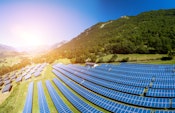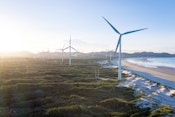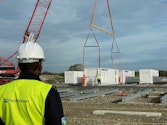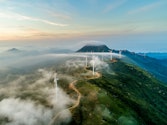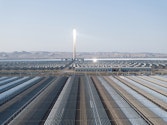Could offshore wind soon be coming to Australian shores?
Massive offshore wind turbines are becoming a feature of coastal areas across Asia, Europe and North America. And they could soon be making an appearance in Australian waters, with the Bass Strait off Gippsland in Victoria already earmarked as a priority area for offshore wind down under.
April 2023 saw the start of seabed testing in the Strait, as part of plans to create a 2.2 GW offshore wind farm called Star of the South, one of the most advanced projects of its kind in the Southern hemisphere.
The scheme, backed by clean technology development behemoth Copenhagen Infrastructure Partners (CIP), is still “in the feasibility phase with environmental assessments currently underway to inform project planning and approvals,” according to the developers.
If it goes ahead, it will be able to supply up to a fifth of Victoria´s energy—enough for 1.2 million homes—while creating 2,000 new jobs in the state.
The Star of the South is unique in the region for its scale and stage of development—but is far from the only offshore wind project being considered in Australia.
“There are 20-plus projects at different stages of early development, including two floating projects by Spain-based BlueFloat Energy and Australia’s Energy Estate,” said the Global Wind Energy Council in its 2022 Global Offshore Wind Report.
The Council selected Australia as one of four markets “with high offshore wind potential,” mainly thanks to a Victoria state government target of 2 GW of offshore wind by 2032, 4 GW by 2035 and 9 GW by 2040.
“The newly elected prime minister has a strong position on renewables for responding to the climate emergency and supports a new target to reduce carbon emissions by 43% by 2030 and achieve net zero by 2035, rather than 2050,” said the Council.
“The Victorian government set a 9 GW target by 2040, with first installation in 2028. The Offshore Electricity Infrastructure Bill introduced in 2021 is set to allow seabed leasing by mid-2022. There is a public consultation on draft regulations for the Offshore Electricity Infrastructure Framework.”
Australia could ultimately source more than 2 terawatts of power from offshore wind, the Council said. Nevertheless, it is understandable that Australia has not moved sooner to take advantage of this resource.
Offshore wind first went mainstream in Europe, where land for onshore projects is in short supply and permitting for renewable energy plants is often stymied by land-use concerns.
In the early days, offshore wind was much more expensive than onshore projects, or solar generation, but the ability to exploit vast tracts of seabed still made it an attractive proposition for European lawmakers.
Australia, with its vast open spaces and abundant solar and wind resources, has simply not needed to worry about offshore wind until now. But recent developments have made offshore wind farms an attractive proposition even in Australian waters.
Massive buildouts in the UK, Germany and elsewhere have helped bring down the cost of offshore wind at a dizzying rate.
According to the latest levelised cost of energy (LCOE) analysis by Lazard, the financial advisory and asset management firm, offshore wind in the US has an LCOE ranging from USD$72 to $140 (AUD$108 to $210) per megawatt-hour (MWh).
This overlaps with onshore wind, which has an LCOE ranging from USD$24 to $75 (AUD$36 to $112) per MWh in the US. In a recent auction in Ireland, offshore wind developers bid an average of €86 (AUD$138) per MWh.
As well as being increasingly competitive, offshore wind is notable for boasting higher capacity factors than most other forms of intermittent renewable generation. In 2021, the average global capacity factor for offshore wind was 39%, with new projects in Europe delivering 50%.
This compares to an average capacity factor of around 35% for onshore wind and 17% for solar. Besides being able to provide energy for longer, the massive scale of many offshore wind projects makes them attractive to major infrastructure investors such as CIP.
One is that the massive turbines used offshore will have to be shipped from abroad, and potentially from Europe if Asian manufacturing capacity is stretched when the first Australian projects come online.
Australia could also struggle to secure installation vessels, although the need for these could be mitigated by using floating instead of fixed-bottom turbine foundations.
Another problem is that most of the expertise required for offshore wind farm construction will have to be imported, although increasingly European project developers are being recruited for Asian markets and thus could be within reach.
Finally, a big problem for offshore wind in many emerging markets is that it delivers large amounts of power to grids that typically run from inland to the coast, rather than the other way around.
The potential for grid connection issues is evident in the Star of the South project, where developers are considering two options: a preferred route via the Loy Yang power station and a backup plan connecting via Hazelwood Terminal Station.
What we have seen in the UK, the world’s second-largest offshore wind market after China, is that battery storage can serve an important role in helping the grid digest large amounts of electricity produced far out to sea.
Pacific Green’s first UK battery projects, on the coast of Kent in southeast England, are located at the landing point for the London Array, one of the largest offshore wind farms in the country. The battery plants can help soak up excess generation from offshore wind.
This is expertise that could easily be brought to Australia—and could help the country become a major offshore wind power in the years to come.
